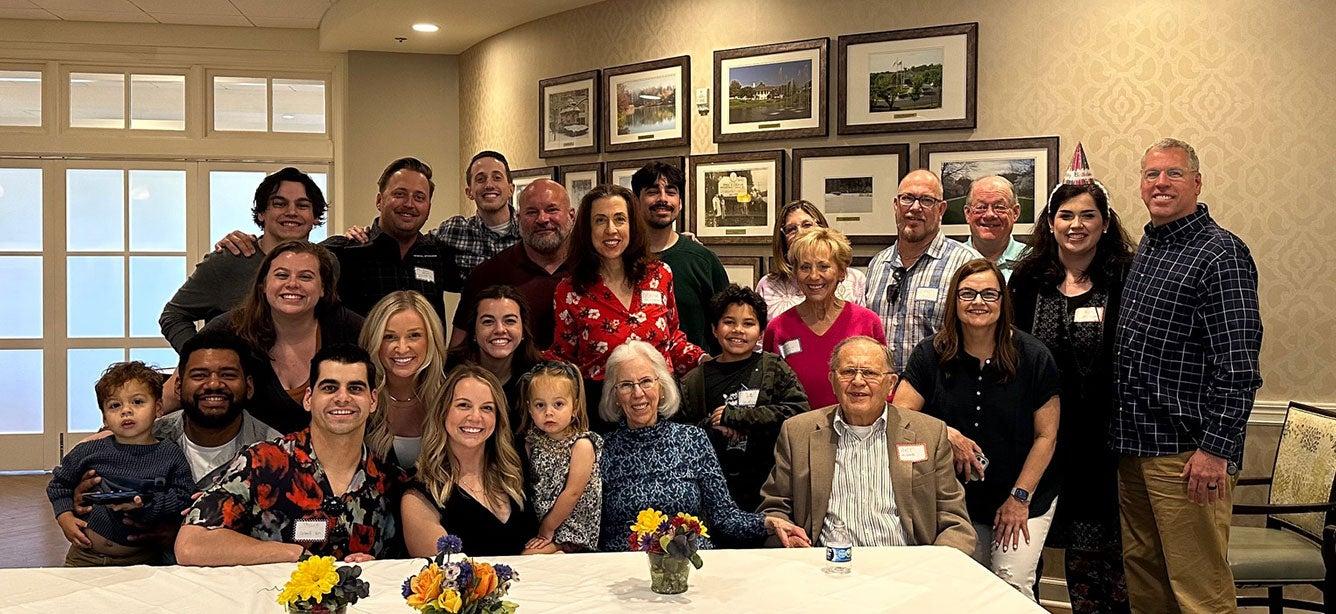Intergenerational Solutions: Strategies to Counter Ageist Stereotypes, Identify Shared Values, and Mobilize Generations
4 min read

At a time when America is more age-diverse than ever, the idea of bringing generations together to solve problems like social isolation, housing shortages, and climate change is gaining traction like never before. A recent issue brief from the Milken Institute Future of Aging gives concrete examples of what intergenerational solutions look like.
The Transcending Age-Based Divides: The Case for Scaling Intergenerational Solutions issue brief is divided into six main theme areas:
- Addressing the Epidemic of Social Isolation and Loneliness
- Strengthening Education Outcomes Through Volunteerism
- Engaging Employers and the Multigenerational Workforce
- Leveraging Creative and Cultural Arts
- Enhancing Housing Options
- Mobilizing Political Engagement and Public Service
Real-world examples spotlighted in the report include Eldera, described as "a global virtual village where multiple generations can connect." That AI-supported platform pairs children and teens with adult mentors age 60 and up for weekly conversations and activities. Another intergenerational program, Heart of Los Angeles Intergenerational Music Programs (HOLA), brings together musicians of all ages to share the joy of creating music.
In the area of housing, the report cites such examples as intergenerational home-sharing, the ability of college students to live rent-free in senior housing communities, and the intergenerational housing community Bridge Meadows in Oregon that "uses the power of community to help children heal from the trauma of foster care." An increase in intergenerational housing models in recent years include co-locating senior housing communities on college campuses.
“There’s this wonderful ripple effect when these types of activities get implemented,” said Lauren Dunning, one of the report's authors and a director at the Future of Aging at the Milken Institute. “There are benefits on all sides.”
The issue brief is the result of many Milken Institute event panels that led to the Future of Aging Advisory Board convening at the 2023 Milken Institute Global Conference. Conversations among more than 30 leaders across industries helped identify opportunities to take intergenerational solutions from ideas to action.
Our key takeaway is that there are concrete opportunities in communities and across generations to use intergenerational solutions, strategies and programs to counter ageist stereotypes, identify shared values, and mobilize generations as valuable community and organizational resources together,” Dunning said.
More about intergenerational solutions
Research in 2022 commissioned by the group CoGenerate (formerly Encore.org) looked into what Americans think about "cogeneration," or bringing older and younger people together to solve problems and bridge divides. Among their top findings:1
- Generational conflict? Not always.
As Emily Garcia-Green of BridgeUSA said, "If we don't learn from the past, we're setting ourselves up for failure. I think there's power in admitting you might not know everything." - Personal connection before collaboration. Always.
“Maybe it’s from my community perspective as an Indigenous person, but if we don’t have a relationship at some basic level, then I don’t really want anything from you," said filmmaker and casting director Lauren Waters. - No one wants to be dismissed because of their age.
- Cash over compliments.
“I think a lot of adult allies look at young people as, ‘Aww, they’re so cute.’ It leads to this place where young leaders get complimented a lot but don’t get actual support and resources to sustain the work they do,” said organizer, speaker, and author Brea Baker. - Productive conflict? Digital natives have few models.
“Disagreement is a productive tool. But young people aren’t learning it because most of the conflict we see is online," said Thanasi Dillos, co-founder of Civics Unplugged. "And there, it’s something we’ve learned to ignore.”
Intergenerational solutions are the focus of The Eisner Foundation, which offers such resources as Sharing Our Space: A Toolkit for Developing and Enhancing Generational Shared Spaces. Work from the National Center to Reframe Aging highlights how using specific examples of solutions, like senior centers that share space with a preschool and have shared reading hours, help combat ageism (discrimination based on a person's age). The National Institute of Senior Centers Programs of Excellence Awards include an "Intergenerational" category to recognize how such programs improve lives.
Dunning said we all have a role to play in fostering intergenerational solutions.
“We do think that there’s a role for everyone in this,” Dunning said. The issue brief offers "something for everyone," from grassroots organizers to policymakers to philanthropies that fund this type of work.
Sources
1. CoGenerate. What Young Leaders Want—And Want—From Older Allies. March 14, 2024. Found on the internet at https://cogenerate.org/wp-content/uploads/2024/03/Young_Leaders_Executive_Summary-1.pdf
